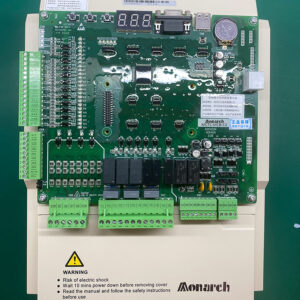Traction elevator components form a sophisticated system that enables vertical transportation in buildings across the world. From skyscrapers to residential complexes, these components work in unison to facilitate smooth, efficient, and safe movement between floors. Understanding how traction elevator components work together is crucial for comprehending the complexities behind their operation.
At the core of any traction elevator system are several key components, including the traction machine, hoist ropes, counterweight, guide rails, and control system. Each component plays a vital role in the overall functionality of the system.
The traction machine serves as the powerhouse of the elevator, converting electrical energy into mechanical energy to move the elevator car up and down. It exerts tension on the hoist ropes, which are connected to the elevator car and counterweight.
Speaking of the counterweight, it serves to balance the weight of the elevator car, ensuring smooth and efficient operation. As the car ascends, the counterweight descends, and vice versa, minimizing energy consumption and reducing strain on the traction machine.
Guide rails provide stability and guidance for the elevator car and counterweight, ensuring they move vertically along a predetermined path. Proper alignment and maintenance of guide rails are essential for preventing derailments and ensuring passenger safety.
The control system orchestrates the movements of the elevator components, responding to passenger commands and optimizing travel efficiency. It monitors various parameters, such as car position, door status, and passenger load, to ensure smooth and safe operation.
In operation, traction elevator components collaborate seamlessly to transport passengers between floors. When a passenger calls the elevator, the control system selects the most efficient car available based on factors such as proximity and current load. The traction machine then engages, applying tension to the hoist ropes and initiating movement.
As the elevator car ascends or descends, the control system continuously adjusts the speed and direction of the traction machine to maintain a smooth ride. Meanwhile, the counterweight moves in the opposite direction, balancing the load and conserving energy.
Guide rails ensure that the elevator car and counterweight stay aligned and on course throughout the journey, minimizing sway and vibrations. Additionally, safety mechanisms such as overspeed governors and emergency brakes provide fail-safe measures to halt the elevator in case of an emergency.
Upon reaching the desired floor, the control system brings the elevator to a gentle stop, aligns the car with the landing, and opens the doors for passengers to exit. The process repeats as new passengers board and select their destinations, showcasing the continuous collaboration of traction elevator components.
In conclusion, traction elevator components form a complex yet cohesive system that enables vertical transportation in modern buildings. By understanding how these components work together, we gain insight into the intricacies behind elevator operation and the importance of proper maintenance and safety measures. From the traction machine to the guide rails, each component plays a vital role in ensuring efficient and reliable elevator service for passengers worldwide.


